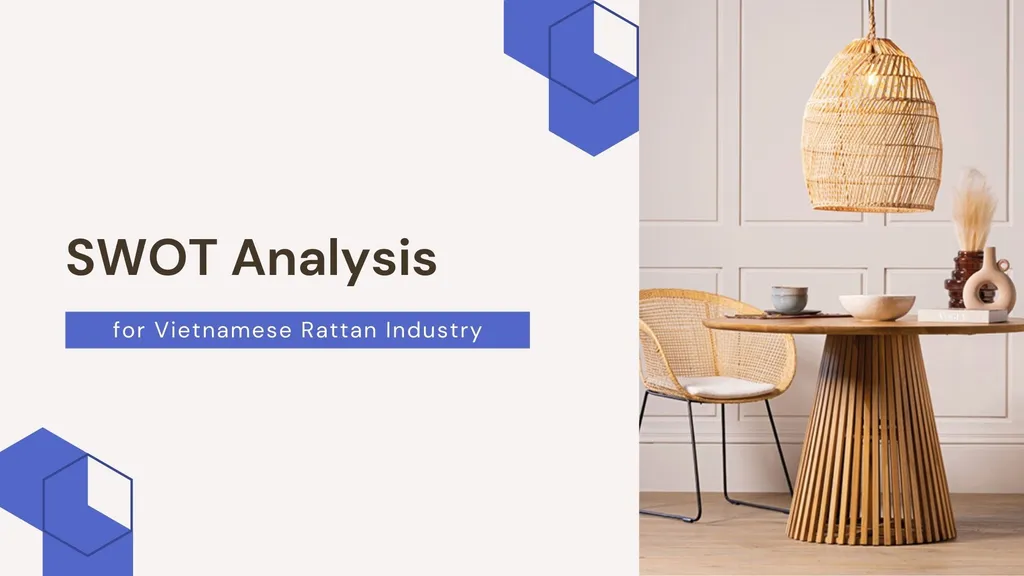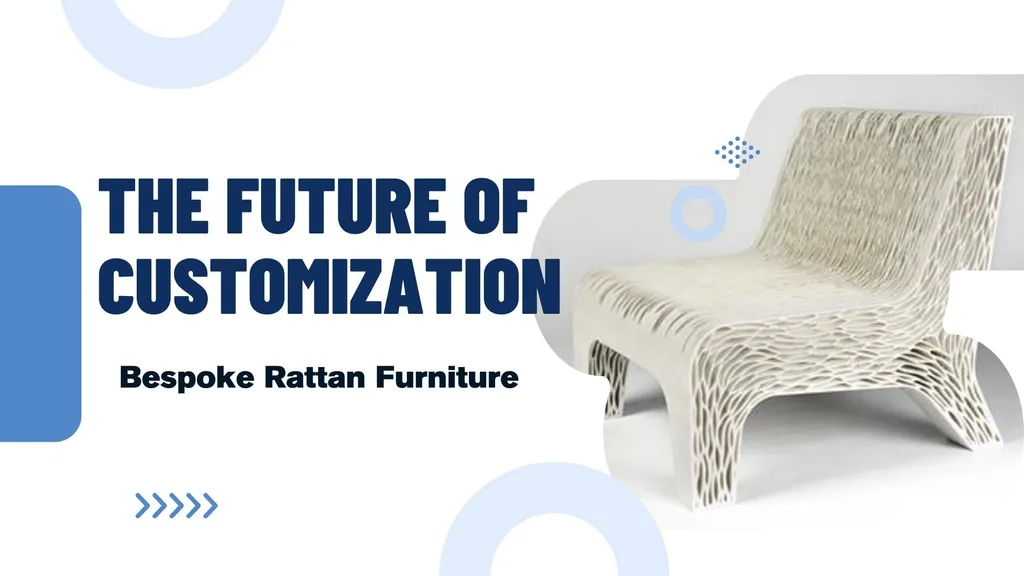Contents

The Vietnamese rattan industry weaves a compelling story of tradition, craftsmanship, and sustainability. Through a SWOT analysis, we uncover the strengths, weaknesses, opportunities, and threats shaping its path in the global market. This vibrant sector, rooted in Vietnam’s lush landscapes, blends heritage with innovation, but faces challenges that require strategic adaptation to thrive.
Strengths of the Vietnamese Rattan Industry
Vietnam’s rattan industry stands out for its competitive edge, driven by exceptional craftsmanship, sustainability, and a diverse product range.
High Export Potential: Vietnamese rattan products, renowned for quality craftsmanship, meet the stringent standards of markets like North America, Europe, and Japan. Artisans’ meticulous attention to detail creates functional yet artistic pieces, fueling global demand.
Sustainability and Eco-Friendliness: Rattan, a renewable resource, aligns with the growing consumer preference for eco-friendly products. Its natural appeal and sustainable production enhance its marketability.
Diverse Product Range: From furniture (chairs, tables, sofas) to decor (baskets, vases) and functional items (storage, mats), the industry’s versatility attracts a broad customer base.
Rich Cultural Heritage: Traditional weaving techniques, passed down through generations, infuse products with authenticity and cultural narratives, distinguishing them from mass-produced alternatives.
Abundant Bamboo Resources: Vietnam’s diverse bamboo species ensure a steady supply, enabling innovation and resilience against supply chain disruptions.
Weaknesses in the Vietnamese Rattan Industry
Despite its strengths, the industry faces challenges that hinder scalability and adaptability.
Limited Large-Scale Production: Small-scale, labor-intensive operations prioritize quality over volume, restricting the ability to meet large orders. Limited access to modern infrastructure and capital further hampers growth.
Dependency on Traditional Markets: Over-reliance on established markets like Europe and North America leaves the industry vulnerable to demand fluctuations and limits innovation for emerging markets.
Insufficient Market Information: Farmers lack access to market trends, pricing, and consumer preferences, hindering informed production decisions and alignment with global demands.
Opportunities for Growth
The Vietnamese rattan industry is poised to capitalize on global trends and strategic advancements.
Rising Demand for Sustainable Products: Growing consumer focus on eco-friendly decor creates opportunities to expand into markets prioritizing sustainability, such as Japan, Korea, and Australia.
Value-Added Processing Units: Investing in modern technology and skilled labor programs can enhance efficiency, quality, and product diversity, strengthening global competitiveness.
New Market Expansion: Trade agreements like CPTPP and RCEP open doors to emerging markets. Strategic branding can position Vietnam as a leader in sustainable, high-quality rattan products.
Innovative Design: Blending traditional craftsmanship with modern aesthetics can attract contemporary consumers, creating unique, market-ready products.
Threats Facing the Industry
External pressures pose risks that require proactive strategies to ensure long-term success.
Resource Depletion: Overharvesting and climate change threaten rattan and bamboo supplies. Sustainable practices and regulatory oversight are critical to preserving resources.
Regional Competition: Competitors like Indonesia and Malaysia, with robust supply chains and diverse offerings, challenge Vietnam’s market share. Continuous innovation is essential to stay competitive.
Economic Volatility: Global economic fluctuations, currency swings, and supply chain disruptions can impact export markets, necessitating agile strategies to maintain stability.
The Vietnamese rattan industry stands at a pivotal moment, balancing rich heritage with modern demands. Its strengths—exceptional craftsmanship, sustainable materials, and cultural depth—position it for global success. By addressing weaknesses like limited scalability and market dependency, and seizing opportunities in sustainability and new markets, the industry can overcome threats like resource depletion and competition. Companies like Ethical Handicraft Manufacturer (EHM) exemplify this potential, blending tradition with innovation to deliver eco-friendly, high-quality rattan products to the world.





